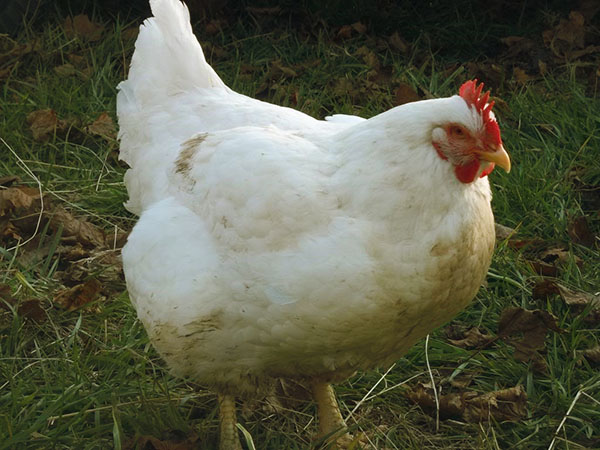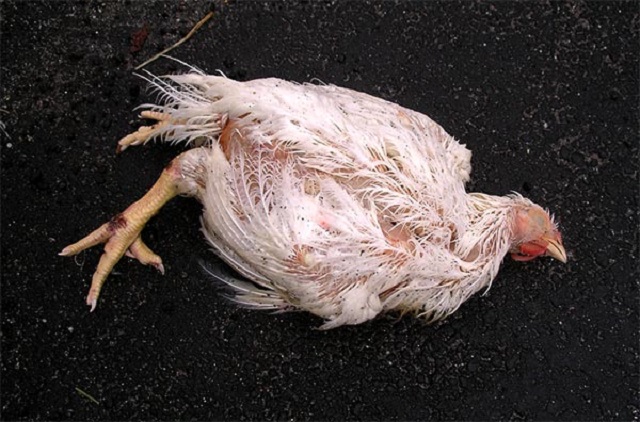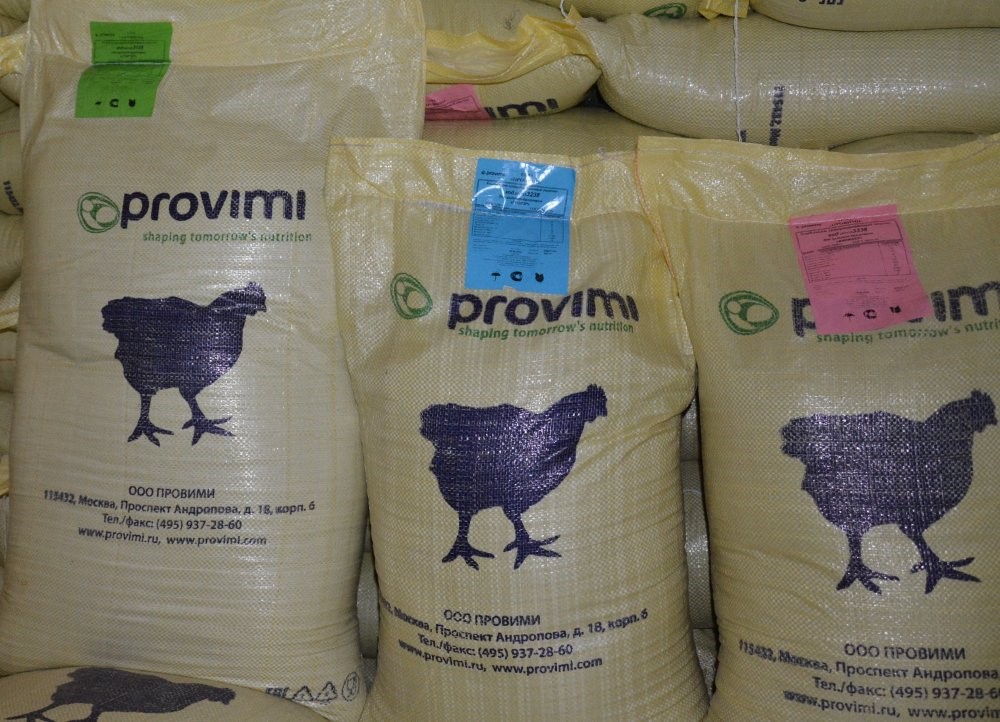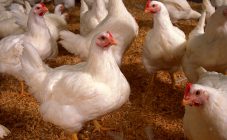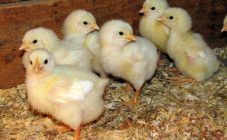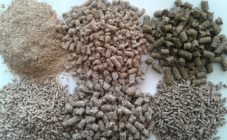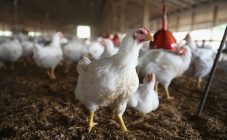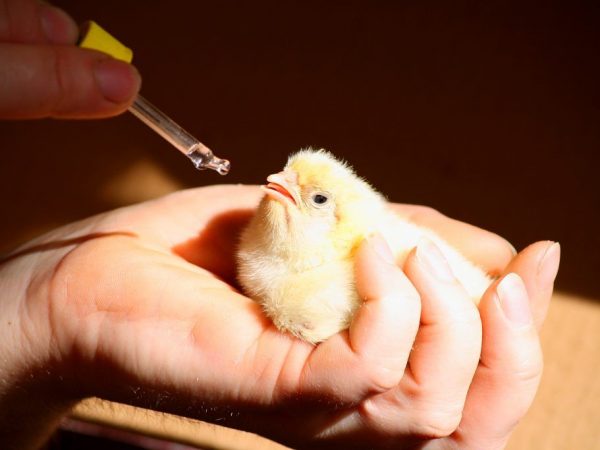Content:
In the process of breeding and keeping broilers, poultry farmers are faced with many diseases. Therefore, it is important to have knowledge of the types of diseases, symptoms and treatments. The article discusses dropsy disease in broilers, symptoms and treatment. Dropsy (wateriness) is a buildup of fluid in the abdomen.
Care rules
Broiler farming is a fairly popular type of small business business. To achieve good results, it is necessary to ensure proper care, nutrition, with a balanced diet for young birds. The table shows the main aspects of choosing a diet in the diet, feeding features, as well as tips for the most proper nutrition for chickens.
Characteristics of the principles of broiler care
| Name | Description, tips |
|---|---|
| Preparation of the area for housing day-old broilers - the room must be dry and warm, with the possibility of warming up | · Warm up the broiler nursery to 33 ° C 24 hours before arrival; · The bedding should be warm material so that the chicks' abdomen does not freeze; · 2 hours before placement, fill the drinking bowls with water and add glucose and ascorbic acid to the water at the rate of 50 g. glucose and 2 gr. for 1 liter of water; · The water temperature should be 25 degrees; Use vacuum drinkers in the first 3-4 days of feeding, with daily cleaning |
| Correct feed to water ratio helps prevent dehydration | 1:17 |
| Features of the feed are an important nuance, since with the growth of the broiler and the development of the intestines, a different type of feed is required | · Sift feed up to 10 days of chick growth; · Poultry from 11 to 24 days of growth should receive coarse feed, with a diameter of 2-3 mm; From day 25 - granulated feed, up to 3.5 mm in diameter |
| Meal frequency | · 7 days inclusive - every 2 hours; · From 8 to 14 days - 6 times a day; · From 15 to 21 days - 3 times a day; From day 22, the broiler should eat 2 times a day |
| Balance of the diet - along with the Start and Finish compound feeds, it is necessary to add organic food | · In the first 9 days of life - boiled eggs, cottage cheese; · From day 5, mix boiled eggs with eggshells (crushed); From day 10 - cereals (corn - 50%, wheat crushed - 25%, oatmeal - 5%, barley flour - 10%) and 10% boiled water and finely chopped nettle; From day 15 to day 20, give carrots (grate), greens (chop), bone meal, chalk |
| Feed varieties - it is important to use different feeds for high gains in broilers | Distinguish between dry and mixed feed, as well as their combination. Dry food should be in the troughs all the time, mixes should be given twice a day. A mash is a wet food, if it has not been pecked for half an hour, you need to throw it away and wash the feeders. This will protect the poultry population from diseases of the digestive system. |
| The recipe for the optimal compound feed from the 10th day of growth of chickens | Corn (675 g.), Crushed wheat grain (360 g.), Barley grain (100 g.), Chalk (90 g.), Bone meal (90 g.), Fish bone meal (75 g.), Feed yeast (60 g.), Grass flour or fresh grass (50 g.), Vitamins C, ascorbic acid (15 g.), Salt (5 g.). |
| List of foods that should not be included in the diet | Meat products, cheeses, fresh milk, wet bread, beets |
Tips from a seasoned poultry farmer:
1) take day-old chicks from trusted suppliers for broiler breeding;
2) during the first day, be sure to drink water with added sugar at the rate of 1 tsp. for 1 liter;
3) feed the Start compound feed in the first 3 days, grinding it in a coffee grinder with the addition of finely chopped green onions.
Symptoms for detecting dropsy
Fluid in broiler chickens in the abdominal cavity, or dropsy, may occur no earlier than the 20th day of life. The cause of the disease is directly related to high pressure between the lungs and the heart, as well as poor liver function.
Symptoms of dropsy in a domestic broiler are easy to detect, it is necessary to inspect the bird population daily. If you notice difficulty breathing, this is the first sign of illness. Further, you will notice the following symptoms:
- the appearance of cyanosis on the skin;
- the chicken is inactive - looks sad;
- when you press the abdomen with your finger, fluid overflow is felt.
Over time, the growth of the broiler becomes slower than that of the broilers.
Chicken dropsy: treatment and causes
Young broilers are not able to completely digest feed, as there is no acidic environment in the stomach. Undigested food entering the intestines is poorly prepared for assimilation, nutrients are not absorbed into the bloodstream, but putrefactive microorganisms are fed. The latter, in turn, secrete toxic microbes that have a detrimental effect on the liver, kidneys and heart. Venous stasis occurs, and fluid accumulates in the abdomen of the chick, dropsy appears in chickens.
Despite a comprehensive study of the symptoms and causes of dropsy, veterinarians advise sending a sick bird to slaughter, since modern veterinary medicine does not offer a ready-made treatment.
For those poultry farmers who are sorry to send a sick bird to slaughter, and who are wondering if the chicken's belly is swollen, what to do, therapy measures are proposed, that is, treat with the addition of acidifiers to the feed. For example, the drug Mixodec contains 10 types of acids with different pH, which enhance various actions in the digestive tract, such as:
- ü do not allow the development of yeast bacteria, mold and fungi;
- ü contribute to the elimination of toxins and poisons;
- ü have an immune-preserving effect;
- ü affect the synthesis of vitamins and fat metabolism.
The use of special compound feed for broilers, taking into account age, such as: BVMD and BVMK - concentrates of compound feed for chickens up to 14 days of growth will help to be treated. They contain all the necessary supplements, vitamins for the prevention of disease and for the growth of the weight of broilers.
Alternative treatment
For the treatment of dropsy, you can also use folk methods:
1) carry out the procedure for piercing the abdominal cavity with drawing out excess liquid through a syringe;
2) after pumping out excess liquid together with water, give diuretic natural remedies, for example, infusions of horsetail and / or bearberry.
Prevention
Any disease during the growth of broiler chickens can be prevented by applying the following preventive measures:
- 1) Add a complex of minerals and vitamins Forte Universal to the water in the drinking bowls at the rate of 8 g. 1 liter of water every 3-4 days;
- 2) To normalize the digestive microflora, from the first days, chickens should be given a probiotic, for example, Bifidum-SCH;
- 3) Monitor the oxygen concentration in the chick room. Normal concentration is 18-20%;
- 4) The operation of ventilation should provide an air supply of 7 m3 per hour per 1 kg of poultry.
Question answer
Novice poultry farmers often wonder whether it is possible to eat a bird sick with dropsy? Answer: dropsy in chicken is not contagious, chicken meat after slaughter can be eaten.
A chicken's goiter is filled with fluid - what is it? Answer: the broiler contracted coccidiosis.
In the world annually, according to statistics, up to 8% of broilers fall ill with dropsy with a loss of profit in the business of breeding them about 350 billion dollars. Therefore, according to experienced poultry farmers, only proper care is a panacea for illness and loss.
